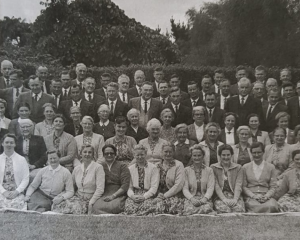A search and rescue expert used Oklahoma City bombing terrorist attack rescue techniques to take control of the CTV Building collapse site, an inquest heard today.
But by the time Urban Search and Rescue (USAR) operations manager Royce Tatham travelled from Palmerston North to Christchurch after the February 22 earthquake, no more survivors were to be found.
Today at a coroner's inquest looking at the deaths of eight CTV victims, who all survived the six-storey collapse but were unable to be rescued alive, he was critical of the amount of time it took to mobilise to the disaster site.
While his Palmerston North-based USAR taskforce had packed up their specialist rescue gear, arranged flights with the Royal New Zealand Air Force (RNZAF), and arrived at Ohakea Air Base by about 4pm - the plane did not leave until 10pm.
And the RNZAF did not have a Hercules available to them, so they had to commandeer a commercial plane, which could not take the 22 tonnes of USAR rescue kit.
The gear then had to be taken by truck to Wellington, which crossed the Cook Strait by ferry, before being driven down to Christchurch - arriving by 4am.
In the meantime, Mr Tatham had flown down, and taken control of the CTV site at around 1am, where the six-storey office block had collapsed and would claim 115 lives.
Giving evidence today he questioned if the RNZAF was the best agency for USAR to rely on, given that they are often deployed overseas and can't always guarantee resources.
He had expected a Hercules, with a massive lifting capacity to take them, but instead had to rely on a commercial plane to carry what it could to Christchurch.
No training had been done with the Air Force ahead of the February quake.
When Mr Tatham arrived at CTV, he called on techniques he had learned from the experts at the Oklahoma City bombing to take control.
He wanted to use listening devices to hear if there were any survivors in the tangled debris.
"My plan was to get everyone to shut up, get off site, do a technical search, and take control," Mr Tatham, a fire station officer and USAR operations manager, said.
He told people in charge of the various rescuers there - fire, police and civilians - that there would be a "quiet period" in 20 minutes.
Once quiet was established he used delsar listening devices to check for signs of life.
They crossed the rubble and at various points paused to say, 'Tap if you can hear me'.
Sniffer dogs were of no use because of the amount of smoke on site from the fire which broke out after the collapse at 12.51pm.
While they found several dead bodies, and managed to extricate them, no more survivors were found.
He was speaking on the tenth day of a coroner's inquest into the deaths of Dr Tamara Cvetanov of Serbia, Cheng Mai of China, Japan's Rika Hyuga and Jessie Redouble, Emmabelle Anoba, Ezra Medalle, Reah Sumalpong and Mary Amantillo, all from the Philippines.
All were students at King's Education School for English Language on the CTV Building's third floor and survived the collapse but could not be rescued from the wreckage.
The inquest, before Coroner Gordon Matenga, continues.
- By Kurt Bayer of APNZ












